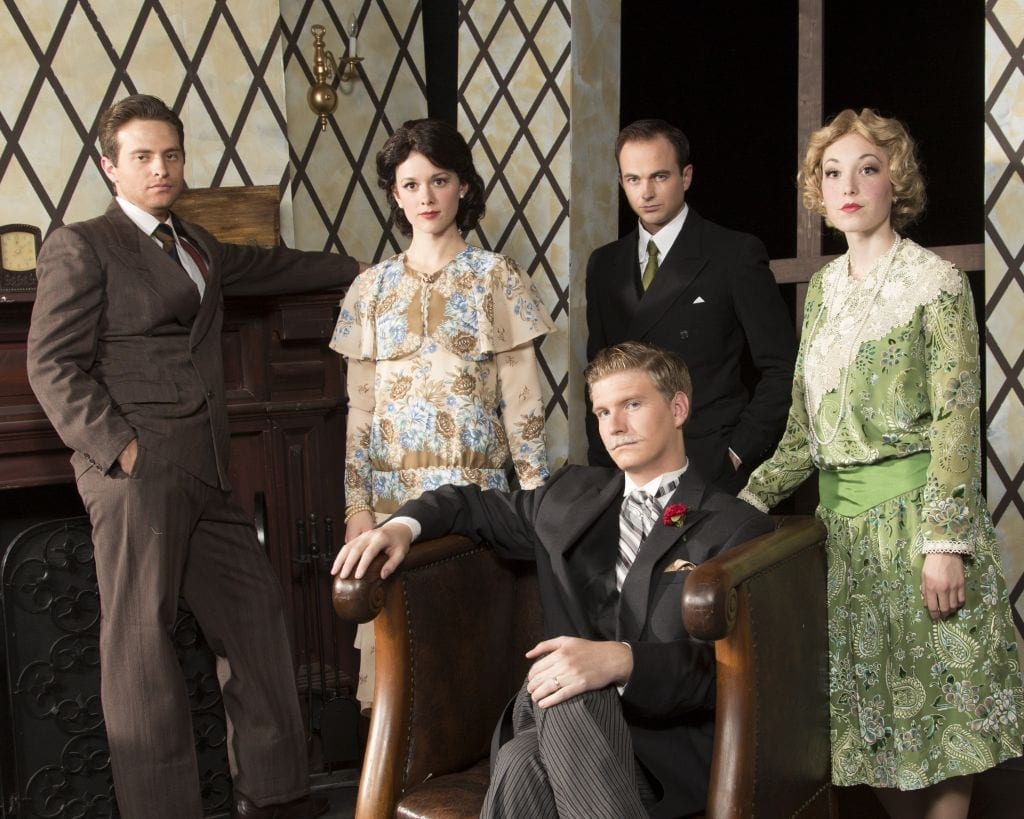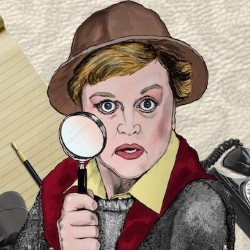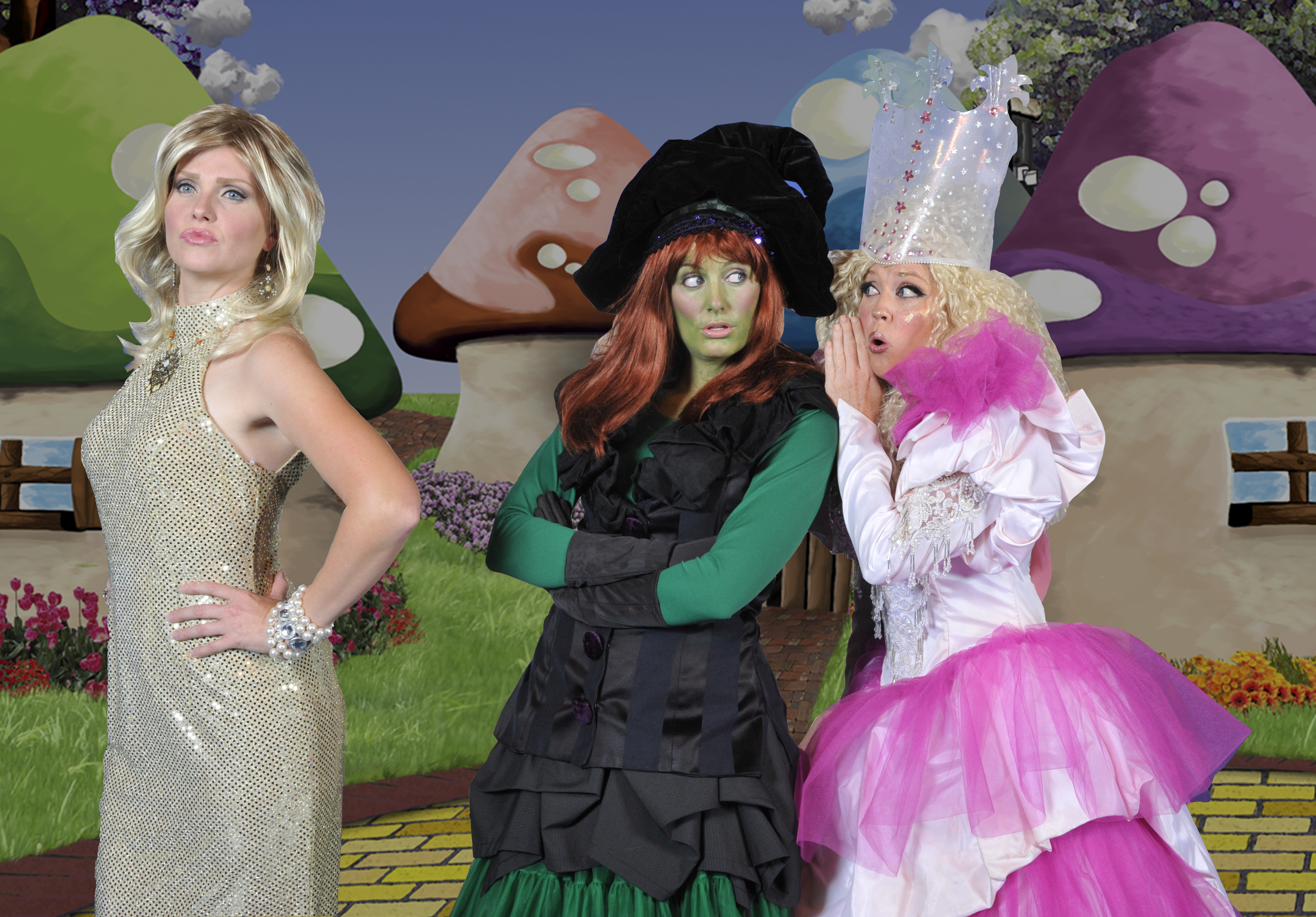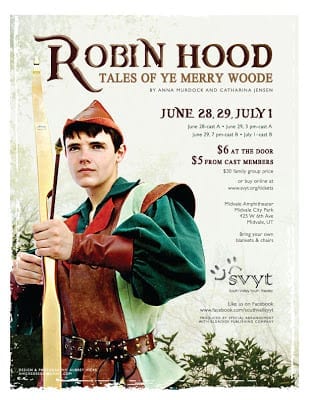PROVO — My first impression of BYU’s Holiday came from its gorgeous set, designed by Carter Thompson. Sky-reaching walls, an ornate fireplace, and wallpaper that sings of older times literally set the stage for a story straight from 1928—but one not at all lost on a 2012 audience.

Show closes December 1, 2012.
Holiday was originally a 1928 play, but is probably most known as a 1938 film starring Carey Grant and Katherine Hepburn. If you’re an old-movie fan, that’s reason enough to run to the box office for this play. In Holiday, entrepreneur Johnny Case heads to meet the family of his fiance, Julia Seton, who turns out to be daughter of millionaire bank owner Edward Seton. The Seton family gives off the air of “old money” and lofty expectations—most of them, anyway. It’s a classic tale of boy-meeting-in-laws: much drama ensues.
Holiday’s script, written in 1928 by Philip Barry, struck me as extremely well-structured. It had an excellent story arc and felt entirely polished (it has been around for 84 years, after all), but the end left much to be desired. I won’t give anything away, but I really wanted to see the resolving action on stage instead of just hearing about it.

Ned Seton (Eric Gourley, left) and Johnny Case (Magarin Hobson).
Much of the acting was superb, although the style took some getting used to because it attempts to find a balance between the dramatic style of classic movies and the realism of today. Although the show found that balance soon enough, the first few scenes had me confused whether the play was an exaggerated satire or attempting to mimic reality. Becca Ingram and Magarin Hobson played potential in-laws Linda Seton and Johnny Case, and made it easy to wish their hopeless situation would turn around. Ingram brought a quiet, furious energy to the role of Linda, while Hobson’s pure earnestness made him a lovable leading man. Both characters could have easily come off as overbearing and unlikeable, but Ingram and Hobson’s talents found the perfect amount of charm and eagerness in their characters. I also have to note two minor characters who almost stole the show, if not for such deft leading actors. Andrew Joy and Taylor Warburton played the goofy but compassionate Nick and Susan Potter and filled the show with hilarious one-liners.

Edward Seton (Alexander Trop) and Linda Seton (Becca Ingram).
Small details came together to create the Holiday atmosphere, including wonderful props and set dressings designed by Lara Cobb and costumes designed by Jocelyn Chatman and Mallory Mackay. (Although there were a few women’s dresses that didn’t flatter as much as I would have liked, but then again I don’t like all vintage fashion.) As mentioned before, Thompson’s set itself gave an exciting first impression to the play and helped it fit well in the Pardoe space. Some plays can’t quite fill the large theater, but the majestic walls did just the trick. I loved how the set seemed to reflect the disposition of certain characters. Sometimes I noticed what looked like decay at the top of the living room walls, as if to mimic the idea that the luxurious lifestyle really did wear away at the parts of people that usually aren’t notice.d The playroom had bright colors and whimsical wallpapers, but seemed to be faded and forgotten—just like a certain Seton girl. As if the depth of the set wasn’t enough, the show increased in excitement when it was revealed to be on a turn table. (I guess I’m a sucker for a good surprise turn table.) Although I would have loved a much quicker transition between scenes, the turn table was a great addition to the show. I haven’t seen that effect used on the BYU stage in a while; it was good to see it used so well.
The play, directed by Barta Heiner, was a quality production but nothing overwhelmingly distinct. I think what struck me most about the show were the thoughts I had as I left the theater. A big part of the plot had to do with Johnny Case deciding between a life of security among millionaires and work he hated or a life full of freedom and uncertainty. It got me thinking about my own life and what I want to accomplish. I love when theater not only tells a great story, but also makes me question my place in the world. That’s exactly what art should do: it should change the audience and make them leave the theater a better, more thoughtful person. So great job, BYU theater. Keep creating thought-provoking, meaningful art.

Ned Seton (Eric Gourley, back left), Linda Seton (Becca Ingram) and Johnny Case (Magarin Hobson), Edward Seton (Alexander Trop, front, left) and Julia Seton (Mallory Gee).





